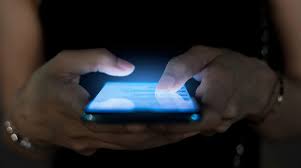
With the rise of digital devices, “blue light” has become one of the most talked-about topics in eye care. From social media posts to marketing for blue light-blocking glasses, many claims circulate about the dangers of blue light. But how much of it is fact—and how much is myth?
Myth 1: Blue Light from Screens Causes Permanent Eye Damage
Fact: There’s no scientific evidence that the blue light from digital screens directly damages the retina. Most concerns about blue light come from high-intensity sources like the sun—not smartphones or laptops.
Myth 2: Blue Light Is the Main Cause of Digital Eye Strain
Fact: Eye strain from digital devices is usually due to how we use them—long hours without breaks, poor posture, and reduced blinking—rather than blue light itself. Dry eyes, fatigue, and headaches are more about screen habits than light wavelength.
Myth 3: Blue Light Completely Disrupts Sleep
Fact: Blue light can affect sleep by influencing melatonin production, but it’s the timing and exposure that matters most. Using screens late at night can make it harder to fall asleep, but moderate screen use during the day is unlikely to disrupt sleep patterns.
Myth 4: Everyone Needs Blue Light Glasses
Fact: Blue light-blocking glasses can provide comfort for some people, especially those sensitive to glare or using screens for extended hours. However, they are not a medical necessity for everyone.
Protecting Your Eyes from Screen Overuse
Follow the 20-20-20 rule: Every 20 minutes, look at something 20 feet away for 20 seconds.
Keep your eyes lubricated: Blinking more or using artificial tears helps prevent dryness.
Adjust device settings: Use night mode or warm light filters in the evening.
Prioritize sleep hygiene: Limit screen time 1–2 hours before bed for better rest.
Final Thoughts
Blue light isn’t as harmful as myths suggest, but screen habits can still affect eye comfort and sleep. The best way to protect your vision is through balanced use of digital devices, regular eye exams, and adopting healthy screen habits.









